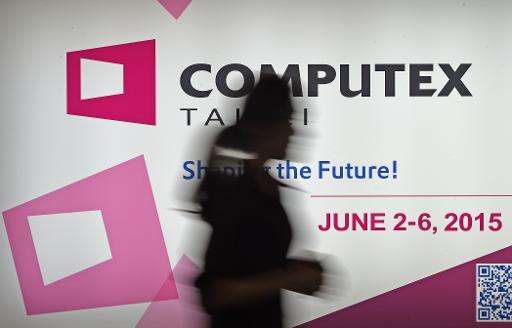New urban landscape at Taiwan's Computex

An improved urban landscape with safer driving, quick payment systems and pollution alerts was laid out at Asia's biggest tech trade fair Tuesday.
Computex, held in the capital Taipei, is in its 35th year with 1,700 exhibitors spread across three sprawling venues, many of whom are tapping into the nascent but burgeoning Internet of Things (IoT).
Already a major force, IoT—in which connected devices monitor, communicate with and control each other—is driving the smart living concept.
Market intelligence firm IDC estimates that by 2016 the value of the IoT market will reach $2.6 trillion.
US carmaker Ford was showing its new hybrid Mondeo which will launch in Taiwan before the rest of Asia-Pacific and offers assisted parking and autonomous braking designed to prevent collisions with cars or pedestrians.
The firm was also promoting its Smart Mobility initiative, where cars communicate with each other to reduce congestion.
"We're trying to solve mobility issues for the future," said Shawn Huang, communications manager for Ford in Taiwan.
"Taiwan's a small market but, compared with China, it's a more mature market for launching new energy vehicles," he added.
With pollution an increasing concern particularly in some Asian cities, Taiwan-based Sunix was showing a prototype sensor to monitor levels of PM2.5—damaging particles in the air—which sends an alert to carriers' mobile phones when readings are dangerous.
The firm also showed its IoLife system, which connects homes, appliances and mobile phones.
"When away from home you can use your mobile phone to turn on the lights when it's dark, or be notified if a door or window is opened, or if there is movement inside your home," said Sammy Tseng, assistant global sales director.
Other displays highlighted the use of near-field communication (NFC), allowing smartphones and other devices to communicate via radio by bringing them within centimetres of each other—so phones can swipe payments.
Computex comes on the heels of last month's inaugural CES Asia tech show in Shanghai, with Taiwan under increasing pressure from rival China as it pushes forward in the tech sector, from producing its own mobile handsets to manufacturing chips.
But industry observers say the island still has a key role to play.
"Taiwan's capabilities are blended with new global smart hardware innovations and taken to world markets," said Lucas Wang, CEO of Taipei-based advisory platform HWTrek, who added that even popular Chinese phone maker Xiaomi uses products built by Taiwanese original design manufacturers.
However, innovations from China that fit the needs and preferences of local consumers are growing fast, he said.
"More creation will be nurtured from there in the near future."
© 2015 AFP




















